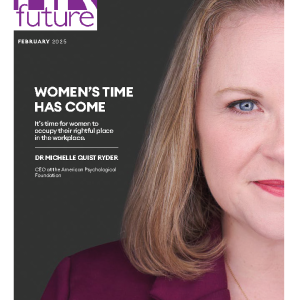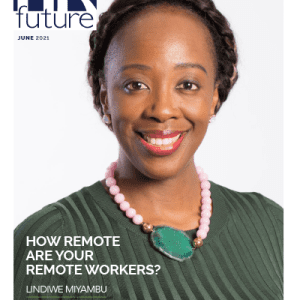COVID-19 took a swipe at corporate culture and weakened the ties that bind employees. Here’s how to fix it.
Corporate culture is the glue that holds businesses together. A strong cultural identity often correlates with satisfied employees and higher productivity. So when COVID-19 arrived and forced millions of workers into long-term work-from-home arrangements, many corporate leaders suddenly found themselves rethinking how they could instill a sense of belonging and connection among employees from afar.
As the coronavirus pandemic stretched the fabric of corporate culture outside traditional office walls and into employees’ personal spaces, leaders had to get creative to revive the lost connections that spontaneously occurred in conference and break rooms and around cubicles.
“For example, people truly miss water-cooler conversations,” says an employee experience director for a large financial services company. “That may start with something simple like asking ‘How are you?’ but individuals need these informal ways to talk, generate ideas, and resolve issues.”
The little things – small talk in the hallway or catching up with a colleague in the lunchroom – can mean a lot to employees when it comes to building connections. While they may not always be visible, these connections reinforce shared values and beliefs about how work gets done. But COVID-19’s imposition of physical distance and the resulting work-from-home policies have caused cracks in the corporate culture foundation:
- A majority (63%) of workers say their company culture has stagnated or worsened since the pandemic, according to research from Qualtrics.
- There is evidence of rising rates in depression and mental health issues among employees, according to a report by CNBC.
“I consult with a French financial services company where, prior to COVID-19, employees were used to going into their office every day,” says Arlene DeMita, partner, PwC. “The bank had rolled out video conferencing and a system for télétravail,” DeMita says, using the French word for remote work, “yet they worried about their employees’ mental well-being.”
“So they conducted surveys,” she continues, “and found that morale was low. Employees were worried about their jobs and they were worried about society amid the disruption of COVID-19. They had lost the sense of connection that had been pervasive when they worked at the office.”
Under the extraordinary circumstances of the pandemic, organizations must work harder to strengthen corporate culture amid the distributed workplace, where some individuals work remotely and others have returned to on-site facilities. They must nurture a sense of belonging and connection by creating space for work flexibility, streamlining communications to avoid stress and burnout, and using solutions that encourage social interactions and build deeper connections. The effort is difficult but worth it. According to the Deloitte 2020 Global Human Capital Trends, a sense of belonging in the workplace can lead to:
- 75% decrease in sick days
- 56% increase in job performance
- 50% reduction in turnover risk
The need to belong affects organizational performance
“Cultivating a sense of belonging was critical before COVID-19, and now it has become heightened,” says Michael Griffiths, partner and learning and leadership practice lead for North America, Deloitte Consulting LLP. “Only 13% of organizations we surveyed before the pandemic said they were prepared to do so. I believe that if we ask that question today, fewer companies would say they have what it takes to nurture belonging.”
Belonging means that individuals feel they have a connection to the organization’s economic and societal values. And they want to know their role in those values. “There is a link between an individual’s performance and the success of the organization,” Griffiths says. “Employees want to understand how they contribute to that.”
When they don’t feel a sense of belonging, individuals become disengaged. And disengagement can result in employee turnover, decreased productivity, and reduced profitability.
“Even in the worst economic conditions, top talent is always mobile,” says Benjamin Granger, senior principal, Qualtrics. “They have higher expectations than others because they can. They get interviews and job offers and get to peek under the hoods of other companies, and those experiences can augment their expectations.”
A crisis like COVID-19 is when you most need top talent. Adverse markets are disruptive to business processes, forcing companies to work harder to compete amid challenges to the supply chain, customer demand, and physical distancing restrictions. And yet, many large organizations cannot meet these extra-effort demands and have filed for bankruptcy.
Working to ensure that people feel attached to the organization “is not only about doing what’s right for the employees at all times,” says DeMita. “It’s also about what’s right for your business and your company. If we are more collaborative, if we are providing workers with flexibility, their productivity improves, and our profitability improves.”
What disengagement looks like
As of October 2020, 51% of employees were disengaged, according to Gallup. Remote workers were distracted, for example, by makeshift home offices and feelings of isolation.
“If I ask my friends if they would like to go back full-time to working from one office, five days a week – most people say no,” Jeanna Lundberg, co-founder and CEO of Respaces, told the BBC. “They like skipping the obligatory commute, feeling trusted by their bosses, and having the freedom to customize their days to their personal needs. But they also complain that the home office is cramped, boring, and lonely after a while.”
Workers may not outright express disengagement, says PwC’s DeMita, but may rather demonstrate it in other ways:
- Not logging into their apps on a consistent basis
- Scheduling fewer interactions with colleagues and customers
- Sending multiple requests to return to the office
“When employees were surveyed after the first lockdown, most said they were provided with adequate work conditions and could adapt to this unexpected change. But some started to suffer from isolation, and we started to receive requests from employees asking us, ‘Can we come into the office just one day a week?’” says DeMita. “Due to COVID-19 restrictions, employees need a serious business reason and a partner’s sign-off to enter the office. So, we knew we needed to invent something new to rebuild the connections between people and talk to each other beyond work-related issues.”
“In our research, we heard a lot about burnout, with comments like, ‘I’m on video calls from 8 a.m. to 6 p.m. It’s a new level of exhausting.’”
Michael Schwendeman, director of research and development, Denison Consulting
PwC implemented psychologist support, encouraged line managers to get involved, and asked its practice leaders to create “moments that matter,” DeMita says. “For example, it could be a 15-minute chat – either on video or physically distanced at a café – where we get our espresso and we just chat about things. And it’s helping. The requests to come into the office are diminishing.”
What organizations get wrong
Most companies were successful in the initial stages of the sudden transition to work-from-home practices, according to surveys conducted by Denison Consulting. When asked “What has your organization done well during the COVID-19 crisis?,” the majority of respondents cited effective communication, prioritization of their health and safety, and the ability to work from home.
However, when asked what could have been done better, the top response reflected the need for work-life balance.
“Since the onset of the pandemic, listening to employees and understanding their changing needs has become more important than ever, with unique challenges arising,” says Michael Schwendeman, director of research and development, Denison Consulting. “For example, in our research, we heard a lot about burnout, with comments like, ‘I’m on video calls from 8 a.m. to 6 p.m. It’s a new level of exhausting.’”
Remote employees with children especially feel the stress, he adds. “Parents are having to make lunches for their children, ensure they’re engaged in their classwork or otherwise entertained throughout the day. That became a lot to juggle, and it wasn’t always visible to supervisors or leadership.”
It’s a lot to juggle for organizations, too. The hybrid workplace has cultural considerations for both remote and on-site employees. People remain concerned about their well-being and their opportunities for advancement, says Granger at Qualtrics.
“In our recent workforce resilience study, employees across the globe were very clear that they aren’t convinced they will be safe going back into the workplace,” says Granger. “In fact, only 37% of the people we surveyed said they were confident that their companies’ safety policies would keep them safe. Moreover, our research is showing that people of color and women don’t necessarily feel that working remotely is having a positive impact on their careers.”
Meanwhile, those individuals who do return to the office may view remote workers differently.
“You need to allow people to stay at home, but you don’t want them to feel like they are somehow less than those in the office,” says Kira Gerbron, senior manager, learning and leadership practice, Deloitte. “It’s a struggle. We’ve seen a massive uptick in organizations wanting to help teams understand how they work together, what those formats are, and how to create connections. They’re also looking at the actual design of the physical workspace as people return to the office to keep individuals collaborative but safe.”
Deloitte has seen a shift toward an office model that is more spokeless hub.
“We’ve seen organizations move out of cities to create more smaller-based office locations to connect people based on geography, rather than pulling them all into one big spot in cities,” Griffiths says. “I’d even say spokes and no hub. And then in those smaller offices, we’re seeing completely open space so people can collaborate without having to necessarily sit right next to each other.”
All these challenges and risks lead to this: in light of how COVID-19 has and is changing how workers connect, business leaders must try harder to nurture a shared sense of belonging.
“The pandemic heightened the urgency for us to respond to the employee experience,” says the financial services company executive. “We wanted to provide ways for people to connect, share stories, learn, be inspired – no matter where they are geographically.”
There are benefits to strengthening corporate culture, he adds. “It was about recognizing how we compete in the market for critical talent. In my opinion, you are establishing trust by being transparent and responding to employee needs. The engagement element of it has an impact. Also, there is operational efficiency to gain. For example, if I can get this information to you so we don’t need to be on calls, we both save time and can solve bigger problems. We can’t just flip a switch and change everything, but we can break down barriers and impact the employee-employer relationship.”
“In our recent workforce resilience study, employees across the globe were very clear that they aren’t convinced they will be safe going back into the workplace.”
Benjamin Granger, senior principal, Qualtrics
Action items for organizations
Several focal areas can strengthen corporate culture for the hybrid workforce:
Reinforce core cultural values around trust, flexibility, and autonomy to support work-life balance. One aspect of this best practice is to challenge assumptions. There may be a knee-jerk reaction among business leaders that at-home workers are less productive and therefore must be micro-managed.
“That says to employees, ‘Clearly this company does not trust me to get my work done,’” Granger says. “That is not a recipe for long-term success.”
Alternatively, autonomy and flexibility with accountability increase productivity. Gartner reports that where organizations offer “radical flexibility” – such as a choice of where, when, and how they work – 55% of employees are high performers, compared with 36% in companies that have 40-hour, in-office work weeks.
There are multiple ways to do this. For example, Telenor, a Norwegian telecom company, has achieved a “huge spike” in productivity using the tight-loose-tight model to provide employees with flexibility in their work approach, with the right levels of accountability:
- Tight: Work or project objectives are tight. There are established end goals and desired outcomes.
- Loose: The methods or parameters of achieving those objectives are loose. Employees determine the best way of meeting the goals.
- Tight: Deadlines are tight, and there is follow-up from leaders to reinforce those deadlines.
Also, give workers options to manage their own schedules, but stress that they own this. “At the end of the day, there is still a need for personal responsibility and accountability,” says Joe Dettmann, principal, people advisory services, EY. “People are going to have to set boundaries themselves and manage those boundaries, even if it feels counterintuitive. The job of leaders is to model and support that.”
Streamline communications to avoid burnout in the distributed workforce. Screen fatigue is real; a recent study found that 75% of U.S. workers have experienced digital overload resulting from the shift to remote work due to COVID-19. Multiple meetings and calls, along with the pressure of being “on,” can lead to fatigue and technology burnout.
“Meeting hygiene is even more important now,” says Dettmann. “I’m working with a client who is driving an initiative around lessening organizational drag due to their meeting culture. It’s about shifting the expectation from being ‘always on and available’ to deliberately creating and calendaring free space for people to think and be productive.”
Meetings should be intentional, Schwendeman says: “Make sure they have a purpose and are well organized. Consider who really must join the call, for example, and have an agenda.”
In addition, be transparent. “Communicate clearly how the organization is navigating this disruption in ways that are anchored in core values,” says Griffiths. For example, he advises, leaders at companies undergoing cutbacks or furloughs should open up to their employees. “Be transparent about what this crisis means from a financial perspective. Understand what you can share but then push the envelope. Share the steps you’re taking, be vulnerable about the challenges, help manage their expectations. And then make sure to tell employees that you trust them with this information and that they’re part of the story.”
Use technology to gauge and improve the employee experience. Start measuring the employee experience to understand how people view their workplace, Granger advises.
“Most companies do not have systematic ways to measure and manage employee expectations,” he says. “But this is fairly easy to do and can be done in one-on-one conversations and short questionnaires and can even be built into existing formal surveys.”
Ask questions like:
- What are your top concerns regarding your ability to get work done?
- Does your manager support you?
- Do you feel trusted?
- Do you have the flexibility you need to be productive in a work-from-home environment that includes time to care for children or family?
- Do you have the right technological support?
- Are we doing enough to provide a connected community?
Bangkok Life Assurance has used employee surveys to gauge how individuals were adjusting to work-from-home during COVID-19.
“Based on feedback, we provided office equipment – including devices – to help teams work smoothly,” says M. L. Jiraseth Sukhasvasti, president and chief executive officer, Bangkok Life Assurance. “The business also introduced virtual Town Halls and individual team gatherings to keep teams connected during this time.”
Also, use analytics to gauge employee sentiment, suggests DeMita. Her French banking customer used surveys coupled with predictive analytics to better manage well-being among workers during COVID-19.
“For example, they would ask, ‘Are you feeling that you’re doing interesting work?’” DeMita says. “Using analytics on the responses, they could start to predict potential wellness challenges and send automated suggestions through text or e-mail, such as ‘take a break, stand up for 20 minutes, or go out for a walk.’ Then they would run follow-up surveys to see whether the push toward wellness programs was showing improvements.”
Those watercooler conversations are difficult to replicate; however, explore opening private channels on Slack or Discord for free-form conversations or organize video-chat coffee breaks or cocktail hour get-togethers. Although these forums may not be spontaneous, they do provide human connection. “Small talk is crucial because it keeps the gears of relationships going,” Deborah Tannen, professor of linguistics, Georgetown University, tells MIT Technology Review.
Another suggestion: use technology that sends gentle nudges to change behavioral patterns and reinforce values. For example, Dettmann at EY says a text to team leaders might look like this:
We’re working to make sure everybody feels like they are a part of something bigger than themselves here. As you open your team meeting this morning, talk about the team’s purpose and what winning together looks like.
That behavioral nudge, Dettmann says, may sound simple, but if you multiply it by 10,000 people across the organization, “You’ve got a shot at moving something. And if you can do that consistently, fed by technology, you’ve got a positive, habit-building movement going on that is viral, and that can shift culture over time.”
Action is worth the effort
“Priorities changed very quickly when the pandemic started,” Schwendeman at Denison Consulting says, “and leaders started pivoting their businesses to fit the new world as it was evolving. Now the strategy around corporate culture must be more intentional – making sure it is strong and has flexibility, that your goals and objectives are clear, and that you’re building to work as a team.”
“Be transparent about what this crisis means from a financial perspective. Understand what you can share but then push the envelope. Share the steps you’re taking, be vulnerable about the challenges, help manage their expectations. And then make sure to tell employees that you trust them with this information and that they’re part of the story.”
Michael Griffiths, partner and learning and leadership practice lead for North America, Deloitte Consulting LLP
The financial payments company is seeing the results, according to the employee experience director.
“We went into this asking, ‘How do we build a culture that democratizes how people contribute so they feel they belong?’ We’re showing employees the possibilities, and now they are problem-solving, creating opportunities, and building relationships.”












